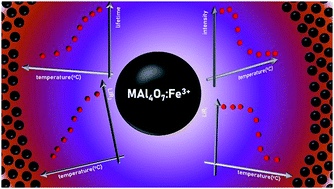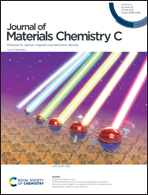From quencher to potent activator – Multimodal luminescence thermometry with Fe3+ in the oxides MAl4O7 (M = Ca, Sr, Ba)†
Abstract
Luminescence (nano)thermometry is an emerging and promising field for remote temperature sensing and thermal imaging of both the surface and interior of objects. While the field is dominated by trivalent lanthanide ions (Ln3+) the transition metal ions have a so far underestimated role in that regard, although their luminescence properties are far more sensitive to changes in the embedding host matrix than in the case of the Ln3+ ions. In this work, we demonstrate the potential of the abundant Fe3+ ion as a candidate for sensitive luminescence thermometry in the aluminate hosts MAl4O7 (M = Ca, Sr, Ba). Although this ion is usually considered an efficient luminescence quencher, it is shown that a targeted control of its luminescence properties makes this activator an interesting and only scarcely investigated alternative to the Ln3+ ions. We investigated the possibility for different modes of luminescence thermometry with Fe3+ (eventually co-doped with Tb3+ as internal thermally insensitive intensity reference), which include absolute intensity, ratiometric or lifetime thermometry. By selective changes in the Fe–O bond distances, it is possible to modulate the relative sensitivity towards values as high as around 2% K−1 at room temperature in CaAl4O7:Fe3+,Tb3+ and connected relative temperature uncertainties of around 0.3%.



 Please wait while we load your content...
Please wait while we load your content...